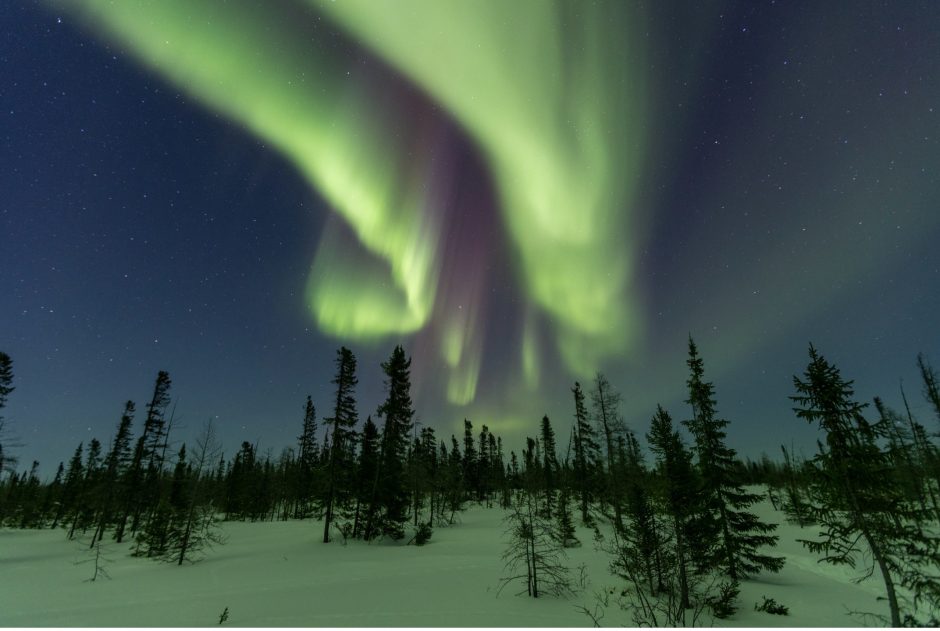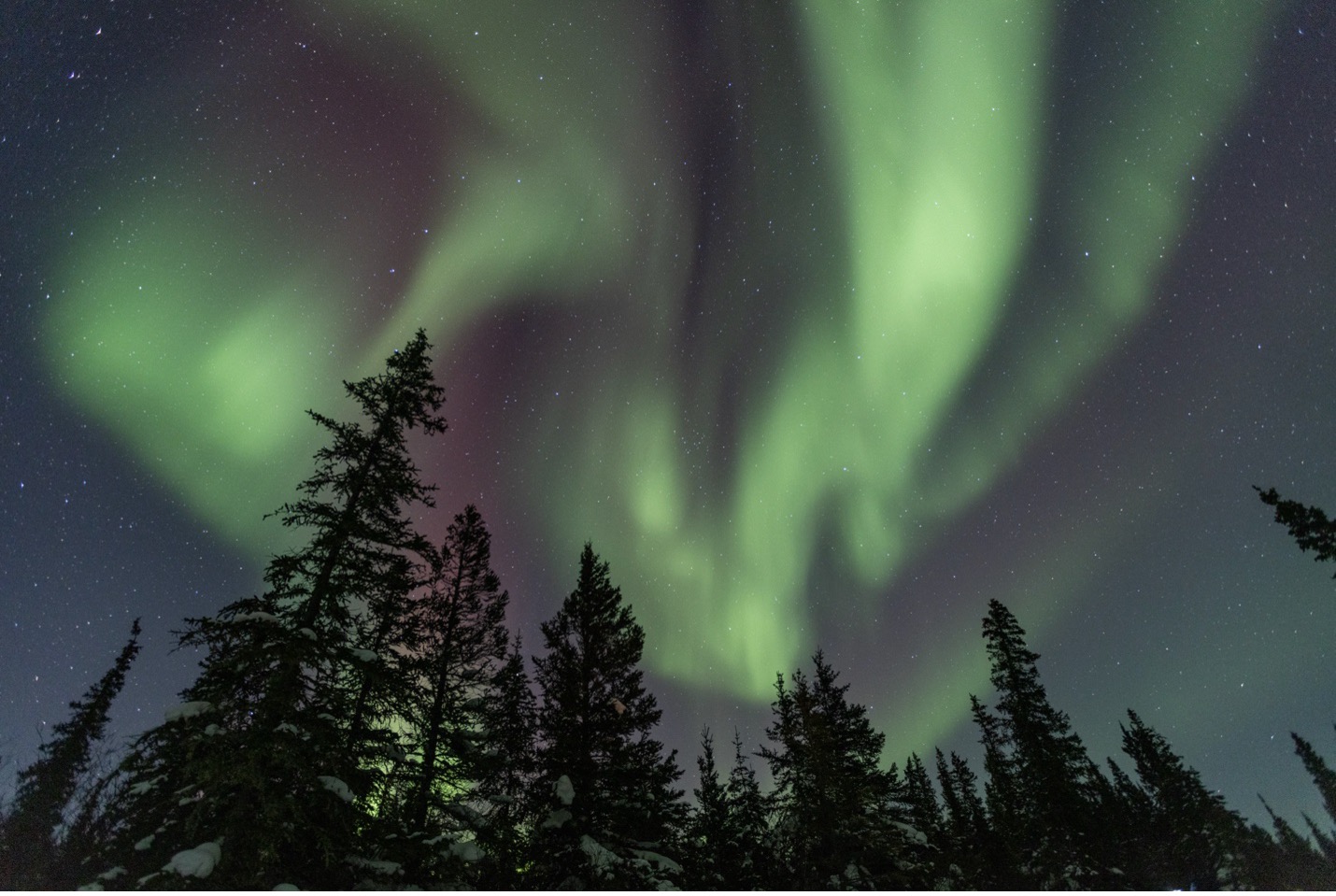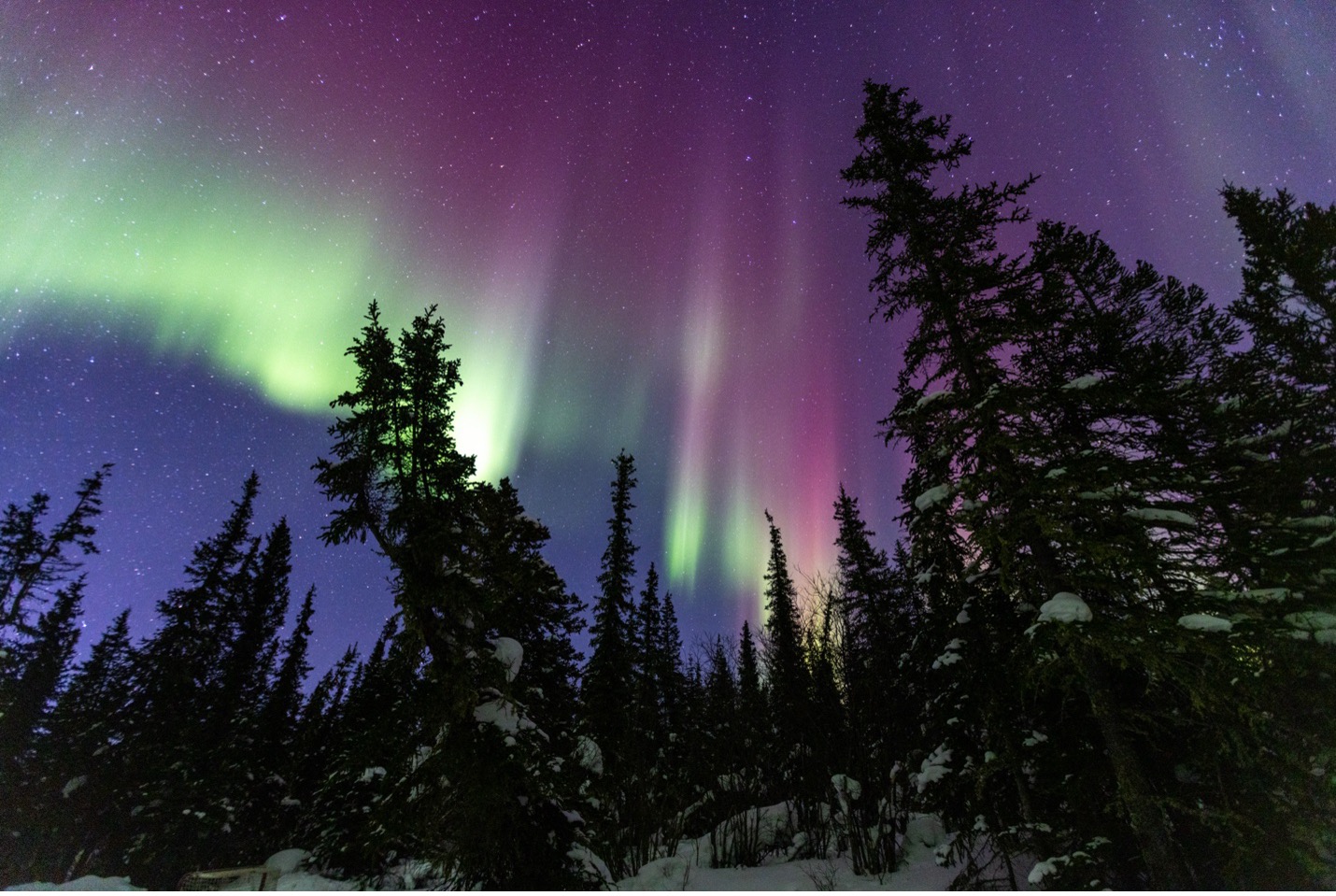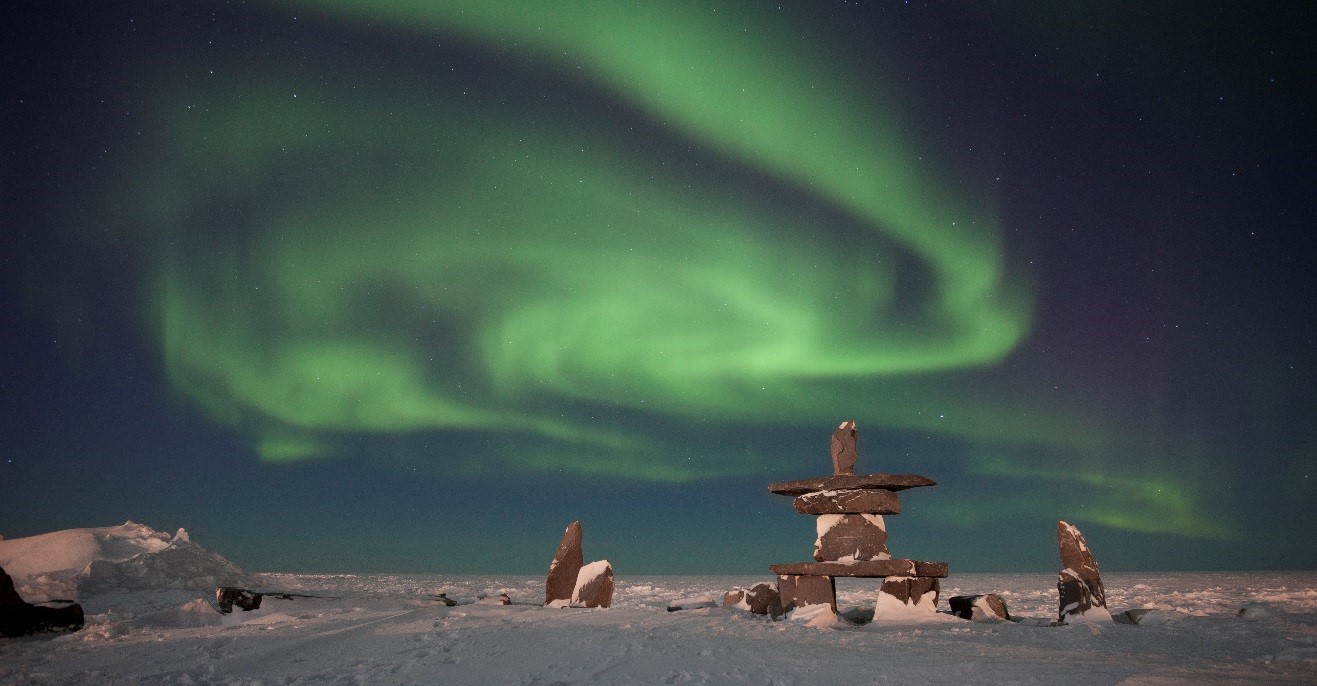
How to Get Perfect Focus for Northern Lights Photography
Focusing your camera at night is one of the biggest challenges out there in the world of photography. It’s hard for you to see, and your camera’s autofocus relies on light and contrast, so it’s not much help. But don’t despair, as there is a tried and true method for focusing at night and getting crisply focused aurora photos.
Let’s dive in…
For starters, when we’re talking about focus and sharpness of northern lights photography, we’re really talking about the foreground being sharp, not the aurora. There are techniques to get the aurora a bit less diffuse and not as wispy and I’ll cover that in a bonus section at the end, but it’s essential to understand that the sharpness of your aurora photos comes from the foreground like trees, buildings and people. If these are sharp, you’re all set.
Another quick piece of advice to begin with is that in order for your foreground (and possibly mid-ground) to be in focus, you should not be super close to your foreground. And in this instance I’m talking about less than 20 feet. In other words, give a bit of distance between you and the closest object so that even with fast apertures like f/1.4, f/2.8 or f/4, you get a decent depth of field in your fore- and midground. There is no perfect distance, but if you can be greater than 20 or 30 feet you can have your foreground and midground in focus, even at shallow depths of field. The wider the angle lens you have, the less imperative, but again, this is an important consideration in the setup for sharp photos.

Once you are set up in location, and have something neat in the foreground with aurora streaming overhead (or, you are setting up your shot in anticipation of the aurora appearing sometime that night…a good practice), you’ll want to use your autofocus and place the focusing point right at the edge of the foreground. If you are using trees, dark buildings, or people as your foreground, place the autofocus point so that half of the point is over the foreground element and half of your point is in the distance (e.g., the sky). The reason for this is that in dark conditions, you can give your autofocus some help by zeroing in on the contrast provided by the distance between fore- and mid-ground, or fore- and background.
If you have a lit structure, you can just go straight to focusing on the light, and your autofocus should work just fine.

If you have achieved autofocus, go ahead and switch your focus to manual and do not touch your lens focusing ring.
If your lens just won’t autofocus, likely because it’s too dark, I will then shine a flashlight on my foreground for a brief moment and use that brightness to help my camera’s autofocus out. If it failed to secure autofocus in the dark, this should do the trick.
An important note about shining the light, though, is that you should check to make sure everyone around you is ok with a light being on for two reasons—a) to ensure no one is taking a photo at that moment and b) to ensure no one is looking at the soon-to-be-illuminated subject, otherwise it’ll reverse some of their night vision they’ve worked hard to get.
I personally like to do the flashlight method right at the get go, as my photography groups are setting up, so there is no risk of people already taking shots and we haven’t been outside for long to allow night vision to build up.
Again, a key aspect of all this is to switch your lens from auto to manual focus to “lock in” the focus so that you don’t have to re-do these steps with every photo you take. You can recompose and even move your tripod, as long as you don’t a) touch the lens ring and b) don’t move closer or further from your foreground (or else it will require a reset of your autofocus procedure).

Infinity Focus
A technique that fellow photo guides use, and one that may seem obvious to you, is to set your lens to “infinity” for all northern lights photos. This isn’t wrong, but I find it to be problematic for two reasons.
First, contrary to what you might expect, actual infinity is just a hair inward from the edge of your focusing ring. In other words, you can’t just dial your focusing ring to the furthest it’ll go and think that will focus on the heavens. The actual infinity spot tends to differ between camera brands, lenses, and even individual copies of lenses making it something you really need to test out ahead of time.
When I use this method, I’ve found that my sweet spot for infinity is just a fraction of a millimeter inside of the infinity line, not the actual infinity symbol. But again, I’ve see so much variation on this over the years that I shy away from it after being disappointed in my results.
Focusing on infinity is very good for astrophotography, as you want stars crisp and focused, otherwise they may look blurry. However, the second issue is that the aurora is almost always going to look “blurry” because it’s more like a cloud than an actual star or hard surface. While it’s nice to have crisp stars, I’m always leery to do this at the expense of your foreground, because if your foreground looks blurry it tends to be quite distracting for the entire shot. If you focus on the extreme distance, you need to be very cognizant of what it does to your foreground focus.

Truth be told, you can abate all this by putting your foreground at a reasonable distance from your camera, but there is inherent risk as outlined above.
As a result, I’m much more in favor of focusing on the foreground at the expense of the far background. One half-way point solution could be to stop down your f/number a bit so that you have a deeper depth of field. For instance, instead of shooting at f/1.4, try shooting at f/2.8 or f/4. These bigger f/numbers aren’t always a good thing, as they limit light, but it’s one way to try and have your cake and eat it too with a deeper depth of field.
You’re probably recognizing right now that it’s hard to have it all with aurora photography—you must make some concessions.
Bonus Tip: Freezing the Aurora
As mentioned a few times already, the northern lights will inherently appear wispy in your photos. Part of this is because the aurora is indeed wispy and behaves more like a cloud of gas than an actual solid object. Thus, it doesn’t have sharp edges and it’s moving around fast enough that in long exposures it can indeed “blur.”
However, there is a way to freeze motion of the northern lights during really active aurora shows. The advantage here is that you can help add definition to the aurora and really showcasing that “curtain” effect. To do so you must shoot at relatively fast shutter speeds. I’m talking something like 2 seconds, 1 second, and maybe even a half a second. Relatively fast for night photography, that is!i
This isn’t easy, as it a) needs to be a really bright aurora show, b) you need to have a big aperture (small f/number) like f/2.8, and c) potentially a high ISO like 8000. Not all cameras can do this well, and sometimes the entire process just isn’t worth the compromise if you have to use such high ISOs. However, taking photos at these faster shutter speeds allows you to capture the aurora in more specific moments, vs. spread out over 10, 20, or even 25 seconds.
What it does give you is some definition in the bands of the aurora so that you can really see the definition and curtain-like effect.

If I’ve said it once, I’ll say it again—photographing the northern lights is one of the most thrilling things you can do in the world of photography. It’s at the same time very challenging, but also straightforward. Hopefully with these tips I’ve helped with solutions to one of the most difficult aspects of aurora photography, which is focus. As you can see, with this workflow (and potentially some practice at home ahead of time) you’ll be ready to lock in sensational photos of the northern lights on your next photo adventure!
All the best,

Court
Leave a reply